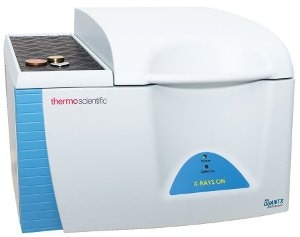Mar 7 2017
Laboratory managers, quality control technicians and scientists conducting routine analysis or research can now use a new bench-top energy-dispersive x-ray fluorescence (EDXRF) spectrometer to perform faster elemental analysis on a wide range of materials and sample sizes.
 Thermo Scientific ARL QUANT'X EDXRF (Credit: Business Wire)
Thermo Scientific ARL QUANT'X EDXRF (Credit: Business Wire)
The new Thermo Scientific ARL QUANT’X EDXRF spectrometer, which makes its debut at Pittcon 2017 (booth 3021) at McCormick Place, Chicago, is designed to be up to four times more sensitive than the previous version. The instrument covers all periodic table elements, from fluorine to uranium, and provides increased sensitivity and flexibility to determine the full elemental composition of a sample.
The ARL QUANT’X EDXRF spectrometer incorporates a 50W x-ray tube and the latest-generation silicon drift detector (SDD) to enable analysis of light elements and small spot analysis. The instrument requires less lab space than its predecessors and accommodates typical sample sizes used in XRF analysis as well as large and irregularly-shaped samples.
“In materials science and characterization, scientists and quality control technicians are under pressure to perform fast elemental analyses that provide full material identification on many sample types and shapes,” said Didier Bonvin, XRF product manager, Thermo Fisher. “We redesigned the ARL QUANT’X to improve efficiency, ease operation and lower cost of ownership, giving manufacturers and researchers a tool to solve their most challenging analytical tasks.”
The new ARL QUANT’X EDXRF spectrometer provides materials characterization across a variety of applications from petrochemicals, mining and cement to forensics, gemology and environmental controls. Additional benefits of the new ARL QUANT’X EDXRF spectrometer include:
- WinTrace software on Windows 10, providing a more user-friendly interface that can easily export results to an external computer or LIMS;
- Standardless analysis through its UniQuant program, which can perform small spot analysis down to 1 mm; and
- A large sample chamber, allowing the instrument to accept irregularly shaped samples, ranging from 0.5 cm to 40 cm in length and up to 5 cm in height or even bulkier samples of 30 x 40 x 36 cm with the optional sample chamber extension.